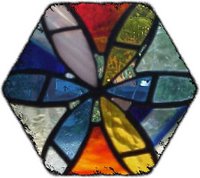Course Insights

If you believe, as I do, that education is more than the transmission of content and learning is more than responding to a selected assessment tool, then you know that the experiences yielded from this last eight weeks in EME 5207 have been invaluable. The kaleidoscope of experiences to include Understanding by Design, online content, blogging (posting and conversations), and the building and sharing of technology rich-designed curriculum units has been very intense and extremely worthwhile as I continue to build on my understanding of creating excellent learning opportunities for students.
Though I commented on Dr. Dawson’s blog regarding specific issues, I wanted to share some other general thoughts that have evolved from taking this class…
I’m still intrigued by the curriculum model of UbD. It has a lot of depth of which I’ve yet to tap – even some of the more “obvious” sections are difficult to apply. For example, ‘thinking like an assessor’ begs for authentic assessment, just as problem based learning is best assessed with a rubric. The very nature of authentic assessment, to include rubric tools, dictates subjectivity and yet the accountability process usually desires objectivity. Even when you think of FCAT Writing, there is a rubric for scoring, but look at the criteria cells and much is subjective – which is, of course why there are multiple graders. So, how do we best balance these issues? I know for my curriculum unit’s PBL, I included a rubric – some of the criteria is clearly objective with quantitative measures, but almost all still has a subjective flavor. Though planning to discuss the rubric’s subjectivity and examples prior in conjunction with the PBL, as well as including peer- and self-assessments using the rubric, I still wonder if I’ll be able to measure the desired results in the intended ways of UbD.
Using blogs for this class (and others) has so much learning potential! It is a different kind of learning, more reflective in nature, than many have experienced. Because of that it is sometimes frustrating, confusing and resisted, but they offer such a personal and public (I know that sounds so contradictory!) platform for thinking about learning. Do we not owe it to ourselves to develop independent learning skills, as well as nurture that in our students? Struggling with concepts, demonstrating skills, ‘thinking outloud’ and connecting with others around the world are daily occurrences in the world of blogging. Though I would hope that could also be said about our typical classrooms, my experience tells me otherwise. So, not only will I continue to blog and read my ever-growing list of edubloggers’ posts, but I will introduce others, including students, to this format. Of course, there are legitimate concerns (to include privacy and safety, AUPs, etc.) that need to be addressed (my most significant one now is finding an effective tool that feeds me comments in addition to postings), but that should not create a barrier worth problem-solving. Also, with the rapid increase in Web 2.0 tools, I’m betting that the next generation of blogging (and yes, I believe it is here to stay!) will offer even more for learning!
Technologies and our changing world continue to impact education and learning. Moving beyond the mere transmission of content to the understanding of information and concepts and then on to the construction of knowledge demands that we continue to think about how we are learning and teaching…and more significantly how we will apply those changes and influence others to do the same.


